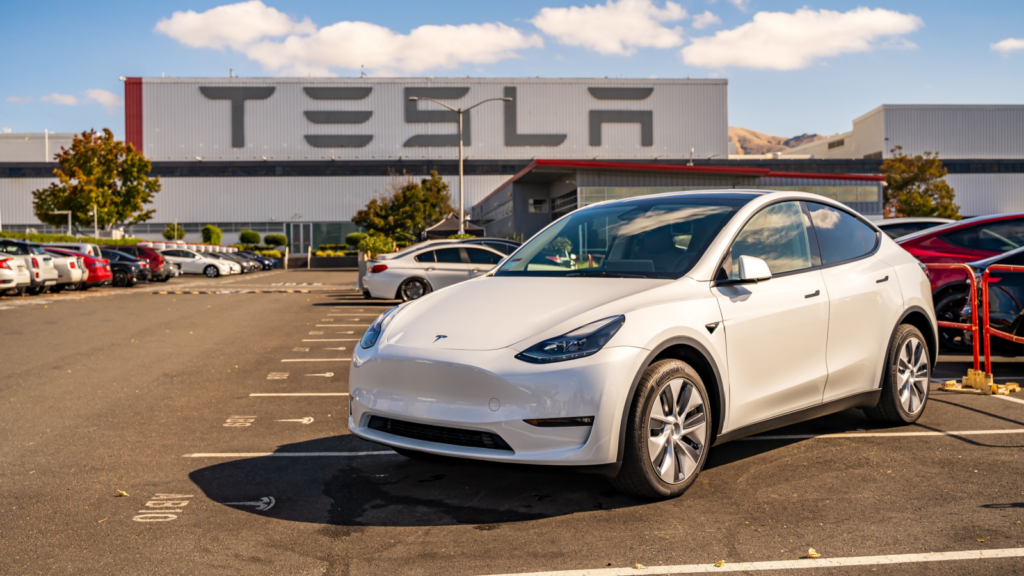After Tesla (NASDAQ:TSLA) reported better-than-feared second-quarter delivery figures, investors saw a 15% surge in Tesla stock. Despite beating forecasts with 443,956 vehicle deliveries, a 4.8% decline from last year suggests ongoing sales challenges.
Competitor General Motors reported a 40% rise in EV sales for Q2. With Tesla’s second-quarter financial results due on July 23, its performance could heavily impact future stock movements.
Turning Into a Meme Stock?
Investor Bill Gross observed Tesla’s behavior resembling a speculative play among retail investors, noting sagging fundamentals and sharp price increases. Tesla’s recent 10-day winning streak, up 43.6% since June 24, began with better-than-expected Q2 delivery numbers.
Gross, once a leading figure in the U.S. bond market, questioned whether Tesla’s strong delivery report justified its significant surge. He likened Tesla to Chewy, Zapp, and the meme favorite GameStop.
Chewy recently gained meme status after Roaring Kitty’s involvement, reminiscent of the 2021 GameStop frenzy.
Gross also previously dabbled in trading GameStop and AMC options for quick gains in 2022, referring to them as “lottery ticket stocks.” Despite Tesla’s 6% YTD increase, it lags behind the S&P 500, which rose 17%.
Recent Gains Don’t Give Impact
Tesla reached its peak in 2024, soaring over 80% from April lows due to strong second-quarter deliveries. Despite doubling in 2023 and being a top S&P 500 performer, Tesla stock lagged behind other AI-driven stocks in 2024 until the delivery report boosted its performance.
The EV manufacturer delivered 443,956 vehicles, slightly below last year’s total, but beating Wall Street’s expected 439,000 vehicles, seen as a positive surprise amid overall market conditions.
Other EV makers, like Lucid Group and Rivian Automotive, also reported strong Q2 results, contributing to optimism in the EV sector. However, Tesla’s strategy of slashing prices and offering incentives has stirred competition and boosted sales, despite broader market challenges.
Other EV manufacturers boosted sales through aggressive pricing tactics, sacrificing profit margins.
While Tesla remains profitable and can sustain narrower margins, companies like Lucid and Rivian struggle with profitability, relying on external funding to stay afloat.
Despite efforts to stimulate sales, these practices do not reflect a robust industry. Tesla faces challenges too, but its financial stability sets it apart from competitors at risk of insolvency without ongoing cash injections.
Stiff Competition with EV Makers
Tesla faced heightened competition from Chinese EV makers amid a shrinking market. Earlier, a workforce cut hinted at tough times. Musk acknowledged challenging EV market conditions at a recent shareholder meeting.
Moreover, Tesla increased prices for its Model 3 cars in European countries like Germany, the Netherlands, and Spain by €1,500 ($1,622) after EU tariffs on Chinese-made EVs. The move came after the European Commission imposed provisional tariffs in July, up to 37.6%, amid subsidy concerns disputed by Beijing.
The International Energy Agency (IEA) predicts over 20% of global car sales in 2024 will be electric, with China leading (nearly half) and Europe following (about a quarter). Wedbush Securities analyst Dan Ives sees Tesla’s challenges easing, especially with recent support from China’s car trade-in incentives, despite significant cost cuts earlier.
Best to Avoid Tesla Stock
Tesla’s stock has underperformed in 2024, despite strong market conditions for the Nasdaq and S&P 500. Optimistic Tesla supporters look to the upcoming robotaxi reveal announced by Musk on X (formerly Twitter) for potential upside.
However, expectations are high for Tesla’s robotaxis despite it has impacted the stock price now, demanding concrete returns from their autonomous vehicles.
Tesla’s investors underperformed the Nasdaq and S&P 500 in 2024. Despite hopes for a comeback, concerns over declining product-quality scores and limited revenue from robotaxis dampen expectations.
A cautious “D” grade is advised, urging thorough due diligence for potential investors.
On the date of publication, Chris MacDonald did not hold (either directly or indirectly) any positions in the securities mentioned in this article. The opinions expressed in this article are those of the writer, subject to the InvestorPlace.com Publishing Guidelines.
On the date of publication, the responsible editor did not have (either directly or indirectly) and positions in the securities mentioned in this article.
